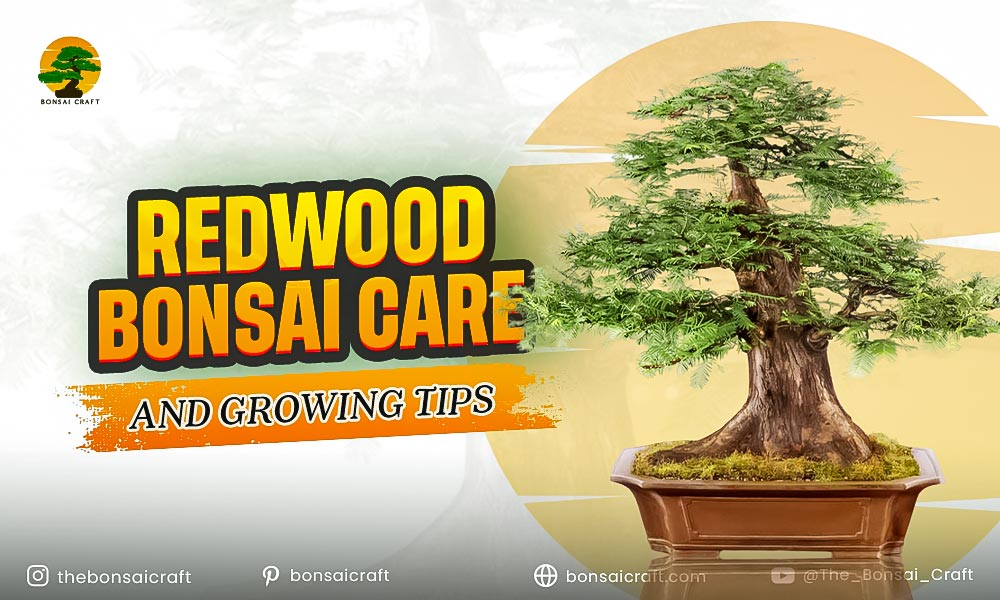
The redwood bonsai tree is a majestic choice for bonsai enthusiasts, combining the grandeur of California’s towering redwoods with the delicate artistry of bonsai cultivation. Whether you are a seasoned bonsai grower or a beginner eager to try your hand at miniature trees, bonsai redwood presents a unique opportunity to practice patience, precision, and creativity. From growing a redwood bonsai forest to shaping a single specimen, understanding proper redwood bonsai care is essential for achieving a thriving and aesthetically pleasing tree.
In this guide, I will share expert insights on how to grow redwood bonsai, including watering, pruning, repotting, and general maintenance. By following these tips, your bonsai redwood tree can thrive indoors or outdoors while maintaining the characteristic beauty of the redwood species.
Introduction to Redwood Bonsai
Redwood bonsai brings the iconic features of the giant Sequoia and Coast Redwood species into miniature form. Their vibrant green foliage, textured bark, and natural elegance make them highly desirable in bonsai collections. Unlike more commonly cultivated bonsai species, redwood bonsai requires special attention to humidity, light, and pruning schedules to maintain healthy growth.
As an experienced bonsai cultivator, I have worked with bonsai redwood trees for years, helping them thrive in a variety of climates and settings. Proper guidance ensures that your miniature redwood will not only survive but flourish, reflecting the grandeur of its natural counterparts.
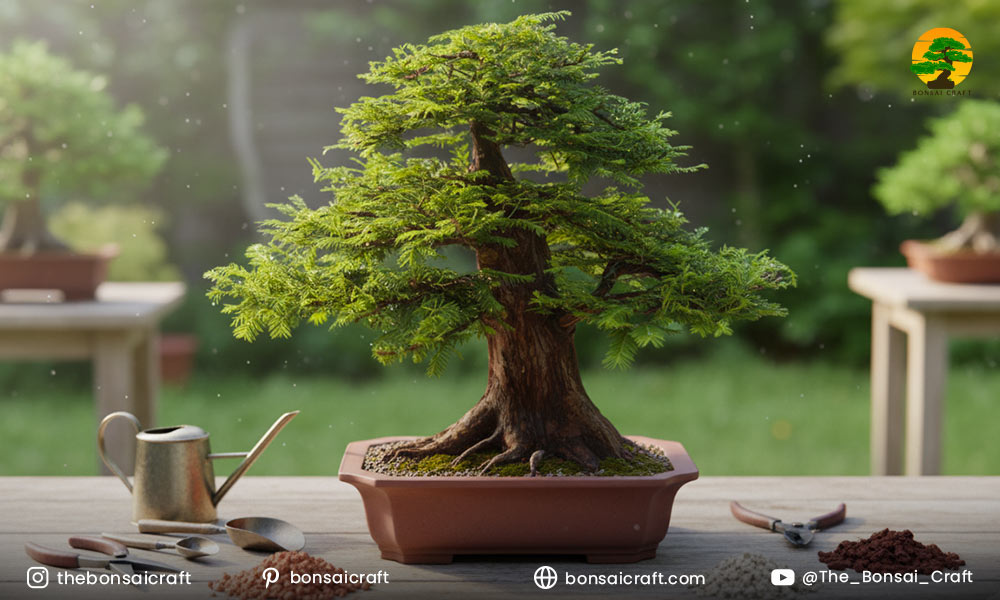
How to Grow Redwood Bonsai
Growing a redwood bonsai requires patience and careful attention to environmental factors. Unlike other bonsai species, redwoods thrive in slightly acidic, well-draining soil with consistent moisture.
Step-by-Step Growing Guide
- Selecting a Seedling or Cutting: You can start with a healthy young redwood or seeds. Growing from seeds will take more time, but will allow more shaping and styling.
- Soil Preparation: For soil, use a mixture of akadama, pumice, and lava rock. Clay soils are to be avoided, as they will trap too much water.
- Watering: Soil should be kept moist without being soggy. Redwoods enjoy high humidity, so periodically misting the leaves will be beneficial.
- Lighting: Intense, indirect sunlight should be given. If placed outdoors, bonsai can be kept in partial shade as protection from leaf scorch.
- Fertilization: Use a balanced bonsai fertilizer in spring and withhold fertilizer in the winter.
When to Prune Redwood Bonsai
Pruning is crucial for shaping a redwood bonsai and maintaining healthy growth.
The best time to prune your redwood bonsai tree is during early spring before new growth begins. Prune selectively to remove dead or overcrowded branches and maintain a balanced structure, encouraging compact growth and aesthetic appeal.
Pruning Tips
- Structural Pruning: Remove unwanted branches to define the main structure of the tree. Focus on creating a natural taper and maintaining a strong trunk line.
- Maintenance Pruning: Regularly trim new growth to maintain foliage density and encourage back-budding. Avoid cutting more than 30% of foliage at a time.
- Tools: Use sharp, sterilized bonsai shears to prevent disease and damage.
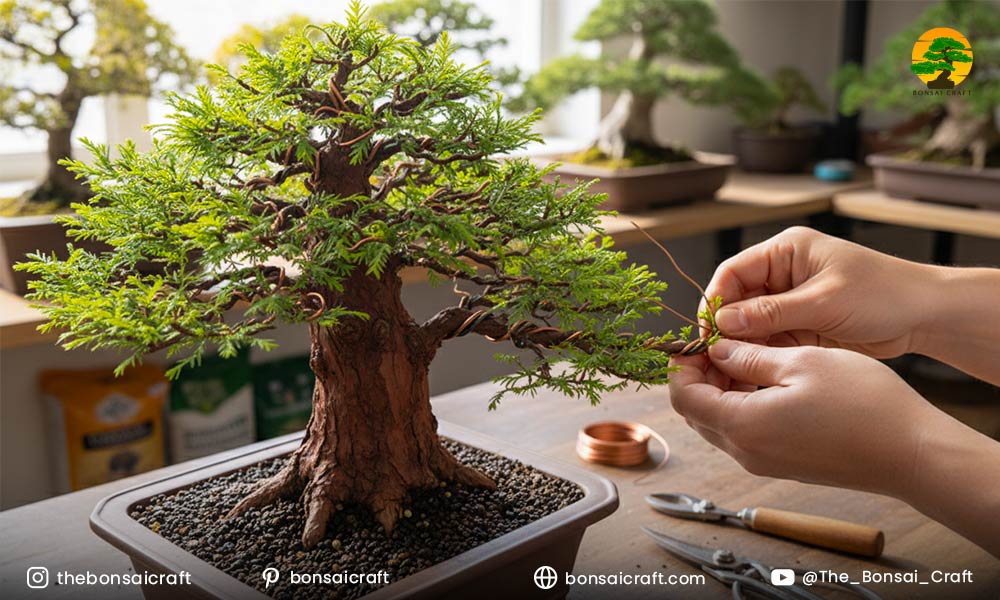
How to Wire Redwood Bonsai
Wiring allows you to guide branch development and achieve artistic shapes for your bonsai redwood tree.
- Timing: Wire branches in early spring or late winter when growth is still flexible.
- Technique: Use soft aluminum or copper wire, carefully bending branches into the desired position. Remove the wire after 2-3 months to prevent scarring.
Repotting Redwood Bonsai
Repotting your redwood bonsai is necessary to maintain root health and encourage new growth.
Repot bonsai redwood trees every 2-3 years during early spring before active growth begins. Trim roots slightly and refresh soil to prevent the tree from becoming root-bound and ensure optimal nutrient uptake.
Repotting Tips
- Select a pot with enough drainage holes.
- Remove the tree from the pot and root comb, and cut back and damaged, thin, or long roots.
- Fill a tree container or pot with new bonsai soil and water it thoroughly.
Creating a Redwood Bonsai Forest
A redwood bonsai forest is a striking way to display multiple miniature redwoods together, replicating their natural habitat.
- Selection: Pick trees with a range of sizes for a natural look.
- Spacing: Place the trees with random, uneven spacing to look like an actual forest.
- Planting: Use a wide bonsai tray and plant in well-draining soil. Keep soil moist and provide consistent indirect light.
- Maintenance: Prune individual trees as needed to maintain the forest aesthetic.
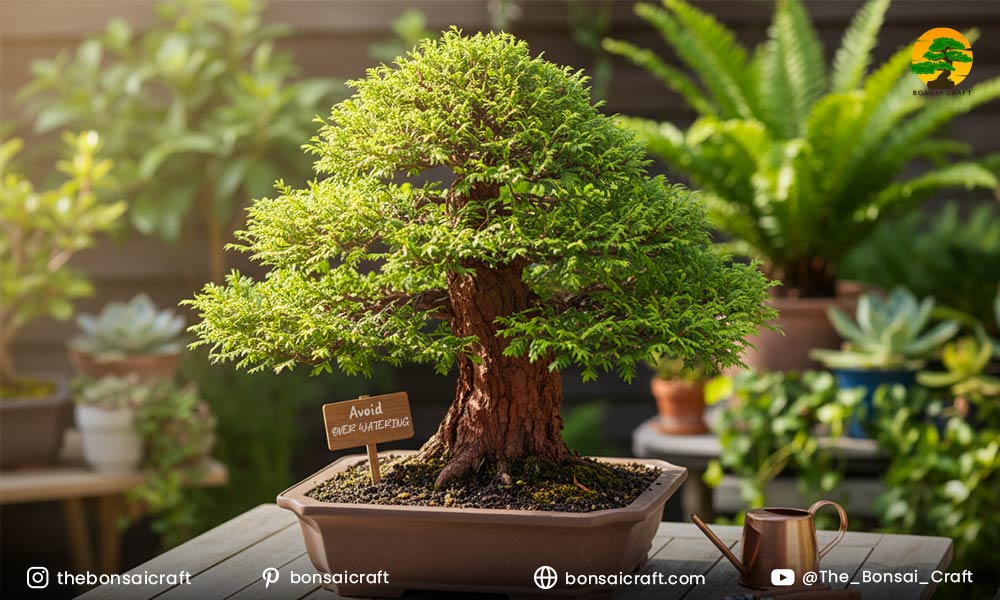
Common Mistakes in Redwood Bonsai Care
Even experienced growers sometimes struggle with redwood bonsai care. Avoid these mistakes to maintain healthy trees:
- Overwatering: While redwoods like moisture, stagnant water can cause root rot.
- Underwatering: Avoid letting the soil dry completely, especially in hot or dry climates.
- Pruning Mistakes: Cutting too aggressively can stress the tree. Always prune cautiously and during recommended periods.
- Incorrect Lighting: Too much direct sun can scorch leaves, while too little light stunts growth.
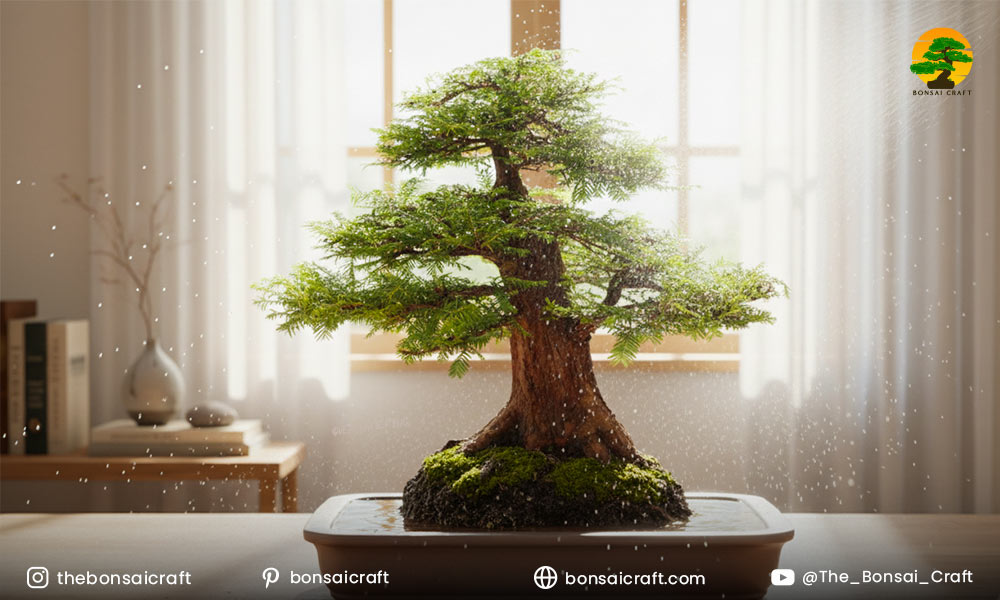
Caring for Indoor Redwood Bonsai
Indoor redwood bonsai requires careful attention to humidity, lighting, and airflow.
- Place near a bright window with filtered sunlight.
- Use a humidity tray or mist leaves regularly.
- Avoid placing near heating or cooling vents that can dry out the tree.
- Rotate the tree occasionally to ensure even growth.
Conclusion
Caring for a redwood bonsai tree combines patience, attention to detail, and a deep understanding of the tree’s needs. From watering and soil selection to pruning, wiring, and repotting, each aspect of care contributes to the tree’s health and visual appeal. Whether you’re cultivating a single bonsai redwood or designing a redwood bonsai forest, following expert guidelines ensures a thriving and majestic miniature redwood that reflects the beauty of its full-sized counterpart.
As a professional bonsai grower, I recommend establishing a regular care routine, observing seasonal changes, and providing consistent attention to your redwood bonsai. With dedication, your bonsai will flourish into a timeless and captivating work of art.
FAQs About Redwood Bonsai
When to prune redwood bonsai?
The best time to prune your redwood bonsai tree is early spring before new growth starts. Selectively trim branches to maintain structure and encourage healthy, compact growth.
How to grow redwood bonsai?
Redwood bonsai requires well-draining soil, consistent moisture, and bright, indirect sunlight. Start from seeds or young saplings, prune and wire regularly, and fertilize during the growing season for optimal health.
When to repot redwood bonsai?
Repot your bonsai redwood tree every 2-3 years in early spring. Trim roots, refresh soil, and ensure the pot has proper drainage to promote strong growth.
How to prune redwood bonsai?
Use sharp, sterilized tools to prune dead or overcrowded branches. Maintain a balanced shape and pinch back new growth to encourage dense foliage and a strong structure.
Can you grow a redwood bonsai forest?
Yes, creating a redwood bonsai forest involves planting multiple trees of different sizes in a wide tray, maintaining proper spacing, and pruning regularly to replicate a natural forest setting.
